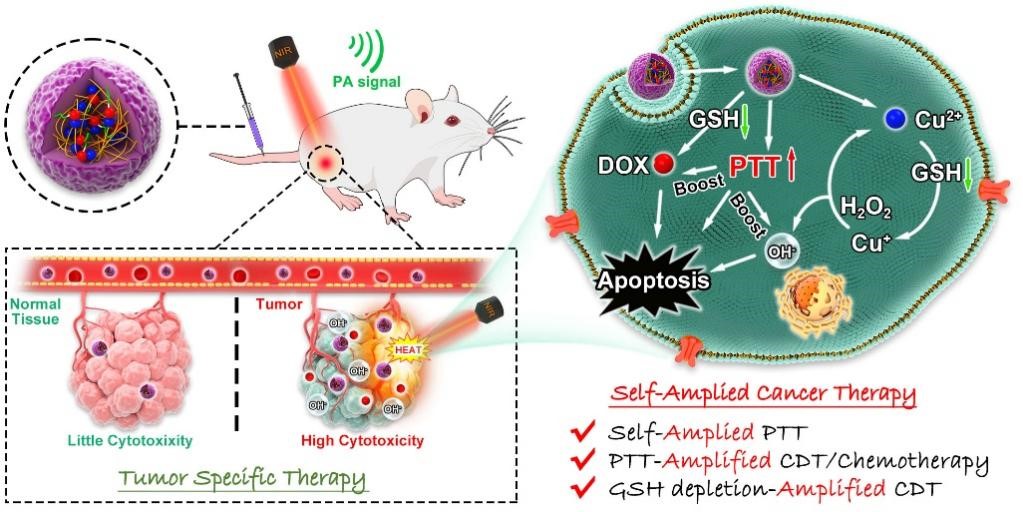(Correspondent Yuxuan Xiong) On December 04, 2021, Prof. Zifu Li and Prof. Xiangliang Yang from College of Life Sciences & Technology and National Engineering Research Center for Nanomedicine published a research paper entitled "Tumor-specific activatable biopolymer nanoparticles stabilized by hydroxyethyl starch prodrug for self-amplified cooperative cancer therapy" in journal Theranostics (IF=11.556).
The clinical application of conventional chemotherapeutic drugs has unsatisfactory therapeutic effects and high toxic side effects. It remains a great challenge to maximize the therapeutic effect while minimizing the toxic side effects of chemotherapeutic agents. In the past few years, chemodynamic therapy (CDT) has emerged as a promising strategy for tumor-specific cancer treatment, which uses the Fenton reaction to convert endogenous H2O2 (high levels in tumor cells) into highly toxic hydroxyl radicals to kill cancer cells. Unfortunately, the high concentration of glutathione in tumor cells and the low Fenton catalytic activity severely limit the therapeutic efficiency of CDT.

In this study, a biosafe, stable and tumor microenvironment-activatable smart nanomedicine was prepared by using dopamine and copper ions as precursors and the redox-responsive hydroxyethyl starch prodrug (HES-SS-DOX) as stabilizer in a simple one-pot coordination polymerization strategy. For this nanomedicine, the doping of copper ions can greatly enhance the photothermal effect of polydopamine, and the excellent photothermal effect can further improve the catalytic efficiency of CDT while promoting the release of the chemotherapeutic drug DOX; the reduction of copper ions and the breakage of disulfide bonds in the hydroxyethyl starch prodrug both deplete endogenous glutathione, thus further amplifying the oxidative stress in tumor cells. The hydroxyethyl starch-based nanomedicine designed in this work showed good therapeutic effects in both in vivo and in vitro studies with low toxic side effects, which are expected to provide new insights for the future design of tumor-specific activatable and efficient antitumor nanomedicines.
Ph.D. candidate Yuxuan Xiong and M.S. candidate Zibing Wang from College of Life Science & Technology are co-first authors of this research paper. This paper is supported by grants from the National Key Research and Development Program of China, National Science Foundation of China, and the Program for HUST Academic Frontier Youth Team (Mechano-nanooncology).
The paper link:https://www.thno.org/v12p0944.htm